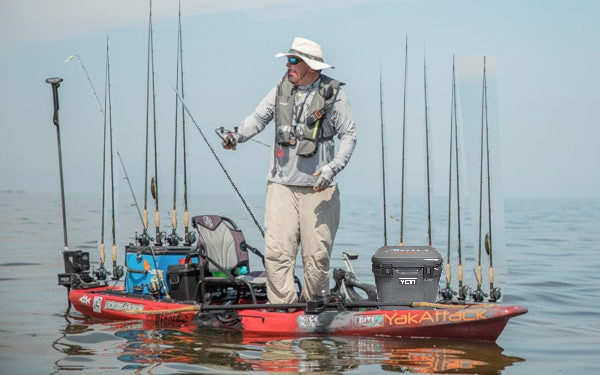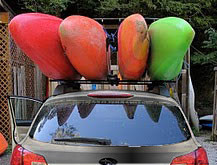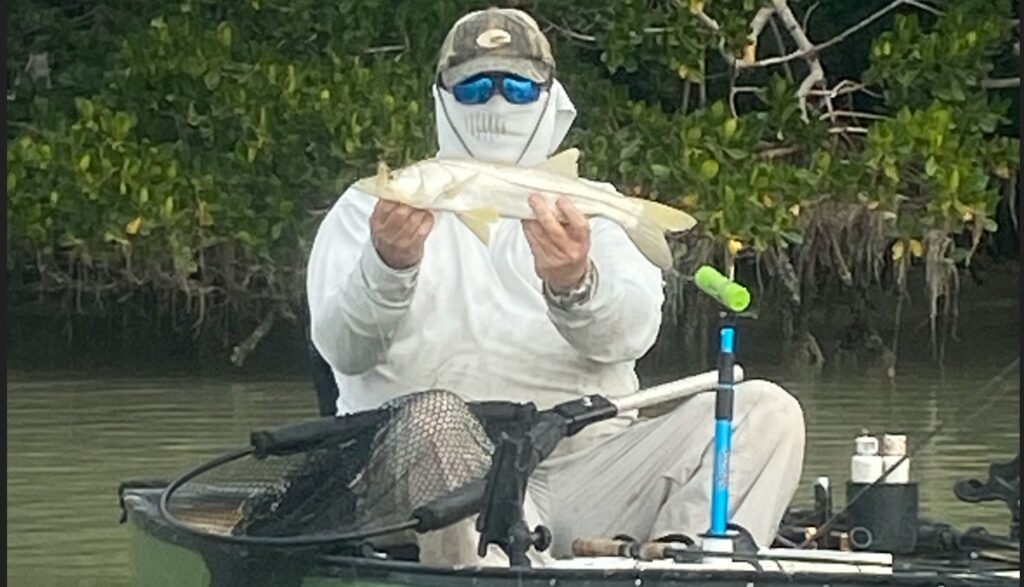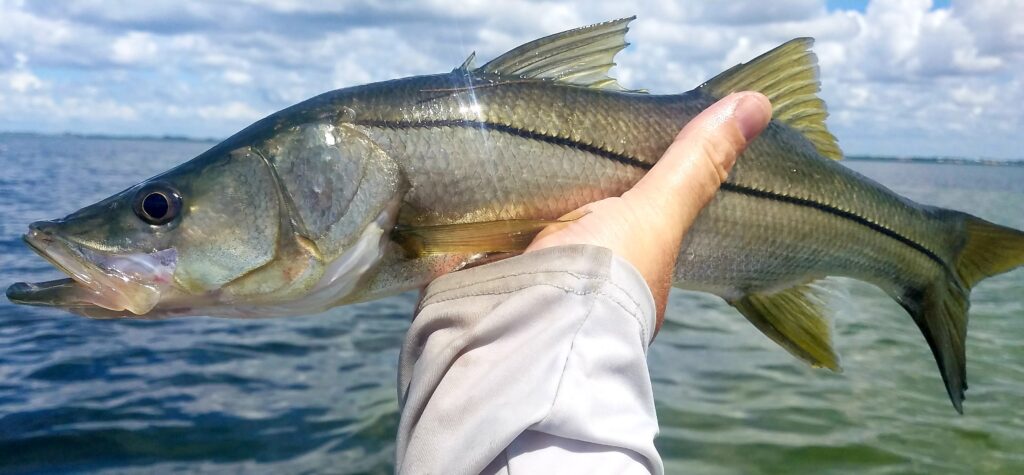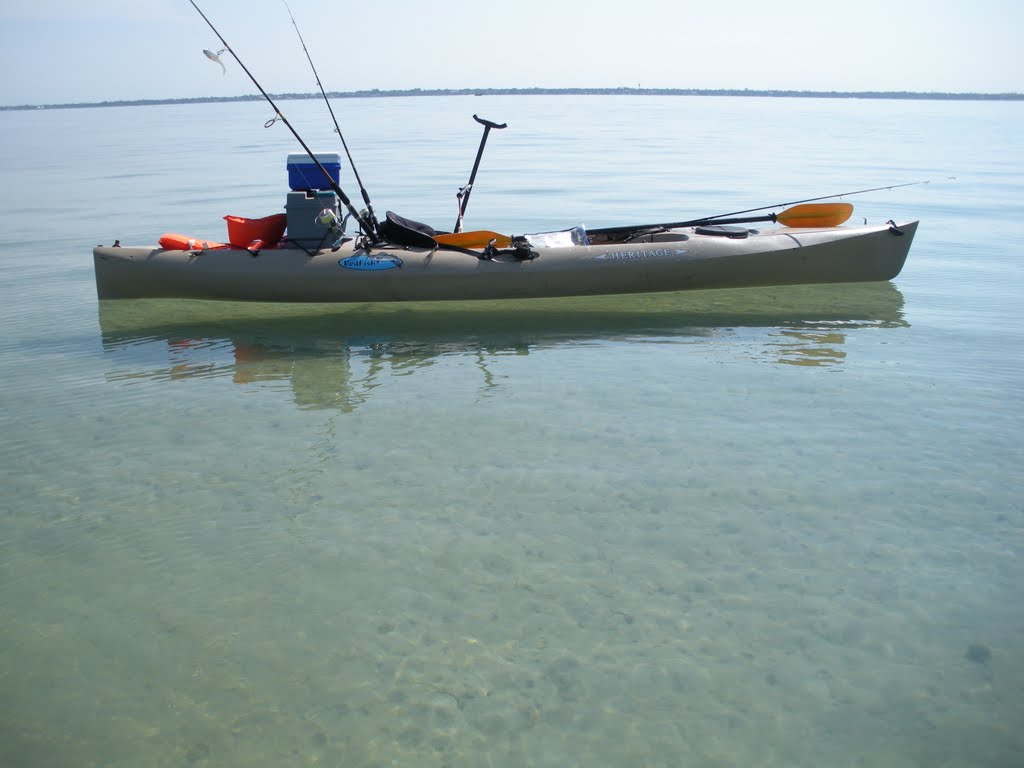
Introduction
I am often asked “How do I get starting Kayak Fishing?” So I decided to write this post as an attempt to provide the best answer I can based on my experiences. So here we go:
The Comprehensive Guide to Getting Started Kayak Fishing.
Kayak fishing is a fantastic blend of two exciting activities: kayaking and fishing. It’s not just about grabbing a fishing rod and hopping into a kayak; it’s about synchronizing yourself with the natural elements for the perfect catch, all while ensuring your safety and comfort. This guide will dig deep into the essentials—selecting the right kayak, kitting it out with the best gear, and maintaining optimal safety protocols.
Choosing the Perfect Kayak for Fishing
Sit-On-Top vs. Sit-Inside Kayaks
Sit-On-Top Kayaks
Pros:
- Ease of Use: One of the significant benefits of sit-on-top kayaks is the ease with which you can get on and off, crucial if you’re frequently casting lines or reeling in fish.
- Storage Space: These kayaks typically come with more accessible storage compartments that are easier to reach while you are seated, which is ideal for keeping fishing equipment and tackle.
- Stability: The wider build generally offers superior stability—a critical factor when you’re leaning over to catch fish or retrieve something from the water.
“Stability is the most important part of kayak fishing. The number one specification that impacts stability is weight capacity. It is imparitive that you pick a fishing kayak with the proper capacity. For more info read this in-depth post.“
-Yakfishin365
Cons:
- Exposure to Elements: Since you’re sitting on top, there’s a higher chance you’ll get wet, which might not be ideal in colder conditions.
- Weight: Sit-on-top kayaks can be a bit on the heavier side, making them less suitable for long-distance travel over water.
Sit-Inside Fishing Kayaks
Pros:
- Weather Protection: The design allows you to shield your lower body from wind and water, offering a warmer experience in colder conditions.
- Speed and Maneuverability: These kayaks are generally more hydrodynamic, making them faster and easier to steer.
Cons:
- Limited Storage: The enclosed design can restrict storage space, making it less convenient to access your fishing gear.
- Capsizing Concerns: If you tip over, re-entry can be more challenging than with a sit-on-top kayak.
Key Features to Consider
- Width and Length: A wider kayak offers more stability, vital when you’re fishing and need to lean or move around. However, a longer kayak can provide more speed but might sacrifice some stability.
- Material: Polyethylene, ABS, and composite materials like fiberglass and carbon fiber are common. Each has its own set of advantages and disadvantages in terms of durability, weight, and cost.
- Weight Capacity: Always consider the kayak’s weight capacity to ensure it can handle not just your weight, but also your gear and any fish you might catch.
Essential Gear for Kayak Fishing
- Fishing Rod Holders: Look for adjustable, clamp-on holders that allow you to fish hands-free and manage multiple rods.
- Fish Finder: Modern fish finders come with features like GPS, water temperature reading, and detailed underwater topography. These can be invaluable for serious anglers.
- Tackle Boxes and Storage Solutions: Opt for compact, waterproof, and multi-compartment tackle boxes. Some specialized kayaks come with built-in storage solutions specifically designed for fishing gear.
- Anchoring System: A compact, foldable anchor will help you stay in your chosen fishing spot without drifting. Some systems are designed to be operated from the seated position for added convenience.
Safety First: Paddling Techniques and Safety Gear
Paddling Techniques
- Forward Stroke: This is the most basic yet most important stroke. It involves a straightforward push-pull technique. Keep your arms straight, and use your torso for the most efficient power generation.
- Turning and Manoeuvering: Use sweep strokes or rudder strokes for effective turning. These strokes involve wider, sweeping movements with the paddle, utilizing one side of the kayak.
Essential Safety Gear
- Personal Flotation Device (PFD): Always wear a well-fitted PFD. It should not limit your mobility but must be snug enough to stay in place should you capsize.
- Paddle Leash: This simple but effective gear keeps your paddle attached to your kayak, preventing it from floating away during accidental capsizes or while you’re handling your fishing gear.
- Communication Devices: A waterproof VHF radio or a whistle can be invaluable in emergency situations for signaling for help.
Conclusion
The right kayak, proper gear, and essential safety measures form the cornerstone of an enjoyable and successful kayak fishing adventure. Whether you’re contemplating sit-on-top vs. sit-inside kayaks, deciphering the vast world of fishing gear, or educating yourself on safety norms, the aim should always be to create a harmonious blend of utility, safety, and comfort. Remember, kayak fishing isn’t just about catching fish; it’s also about enjoying the journey responsibly.
Kayak Fishing Safety: Essential Tips for a Secure Kayak Fishing Experience
Kayak Fishing for Beginners: A Fun and Adventurous Way to Catch Fish!

